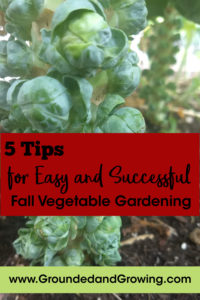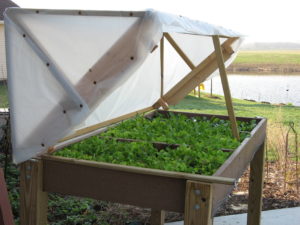 Vegetable gardening is not just a summer activity. With a little planning, your vegetable garden can produce a harvest well into the Fall.
Vegetable gardening is not just a summer activity. With a little planning, your vegetable garden can produce a harvest well into the Fall.
Thankfully Fall is about a lot more than just “Back to School” and Pumpkin Spice flavored everything. With a little planning and planting, you can extend your vegetable growing season well into Fall. Most people think to ask about this in September or October—by then it’s really too late. Fall gardening really starts in midsummer, right as the summer’s harvest is picking up steam.
Honestly, this is one reason I haven’t had much if any of a Fall garden most years. Especially as a mom of small children. There is a strong temptation to turn my back/ mow it down/ or take a torch to my garden. I’m tired of the heat, and tired of dealing with the weeds and watering.
But I’m slowly coming around to the idea of putting more effort into a Fall garden. For me, part of having a garden as a mom with small children has meant scaling back. And what I’m finding is scaling back my main summer garden gives me more time for a Fall garden. Which is a win-win in my book.
My 5 Favorite Tips for a Successful Fall Garden
1. Plan and plant early.
Mid-July through about mid-August is the time to plant cool-weather crops like broccoli, Brussels sprouts, and cauliflower. If you don’t have a garden center that carries these transplants past early spring, you’ll need to think even further ahead and start these from seed in May or June.
Brussels sprouts are one crop that I plant as transplants along with broccoli in early spring and it doesn’t do much until Fall rolls around. Right now as I write this in August, I can see the beginnings of the individual Brussels sprouts forming along the stem of each plant.
Personally, I prefer cruciferous vegetables like broccoli, Brussels sprouts and cauliflower when they’re grown in the fall. A light frost actually helps release sugars from the cells in the plant, which makes them taste sweeter.
2. Cool-season crops and quick-maturing warm-season crops are the best choices
Other cool-season crops you can plant as we move towards fall are lettuce, turnips, collards, carrots, peas, radish, and spinach. All will tolerate cool fall temperatures well. Green beans, though considered a warm-season crop, may be planted for fall harvest since they mature quickly. Most varieties of green beans grow and develop in 50 to 60 days, so as long as you get your seeds planted by mid-August, you should be able to harvest beans before frost.
3. Get plants established before the soil cools off.
While there are plenty of plants that will tolerate cool Fall temperatures (see #2 above), it can be tricky to get these seeds to germinate well as nights become cooler and the soil cools. I learned this from experience when I tried to start lettuce well into the Fall. I used a brand new packet of seed, and only a few seeds sprouted. I tried the same seeds indoors, thinking I had a bad batch of seed, and they all grew like crazy. The moral of the story: just a few degrees of warmth goes a long way in germinating seeds.
4. Extend your gardening season with covers and cold frames.

With the added tent on top, we have planted our salad table as early as February 5th have harvested salad greens as late as Thanksgiving!
It is also possible to extend your vegetable gardening season by using floating row cover and cold frames with cool-season crops. Both will help hold in the day’s heat during chilly fall nights. We’ve used a mini cold frame consisting of a wooden frame and a clear plastic drop cloth to cover our lettuce crop. This setup has allowed for fresh lettuce as late as Thanksgiving at our house.
5. Use mulch to keep the ground from freezing around root crops.
Adding several inches of mulch around root crops like carrots and beets will keep the ground from freezing so you can continue to harvest into the late fall. Plus these crops will likely get a bit sweeter while out in the cold, much like broccoli and Brussels sprouts.
Even if you’re not ready to go all-out on a Fall garden, try planting something for a Fall harvest. You don’t have to go crazy. Just a bit of lettuce can be a welcome addition to your kitchen and expand how you think of the “growing season”. All you need is a pot, some potting mix, and lettuce seeds. See how easy it is in this post.
If you liked this post, please subscribe to Grounded and Growing today and receive your copy of “15 Tips to Become a '15 Minute Gardener'” so you can spend less time working ON your garden and more time enjoying being IN your garden.! It’s absolutely free. When you join the Grounded and Growing community, you’ll finally take the garden off your “To-Do” list and allow yourself time to enjoy your garden and savor the peace and serenity there. I tell subscribers about new posts as soon as I hit ‘publish’ and send weekly-ish updates on what’s going on in my garden– good, bad AND ugly.

All Rights Reserved. © 2019 Jennifer Schultz Nelson.
Leave a Reply